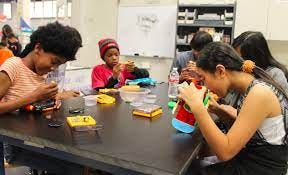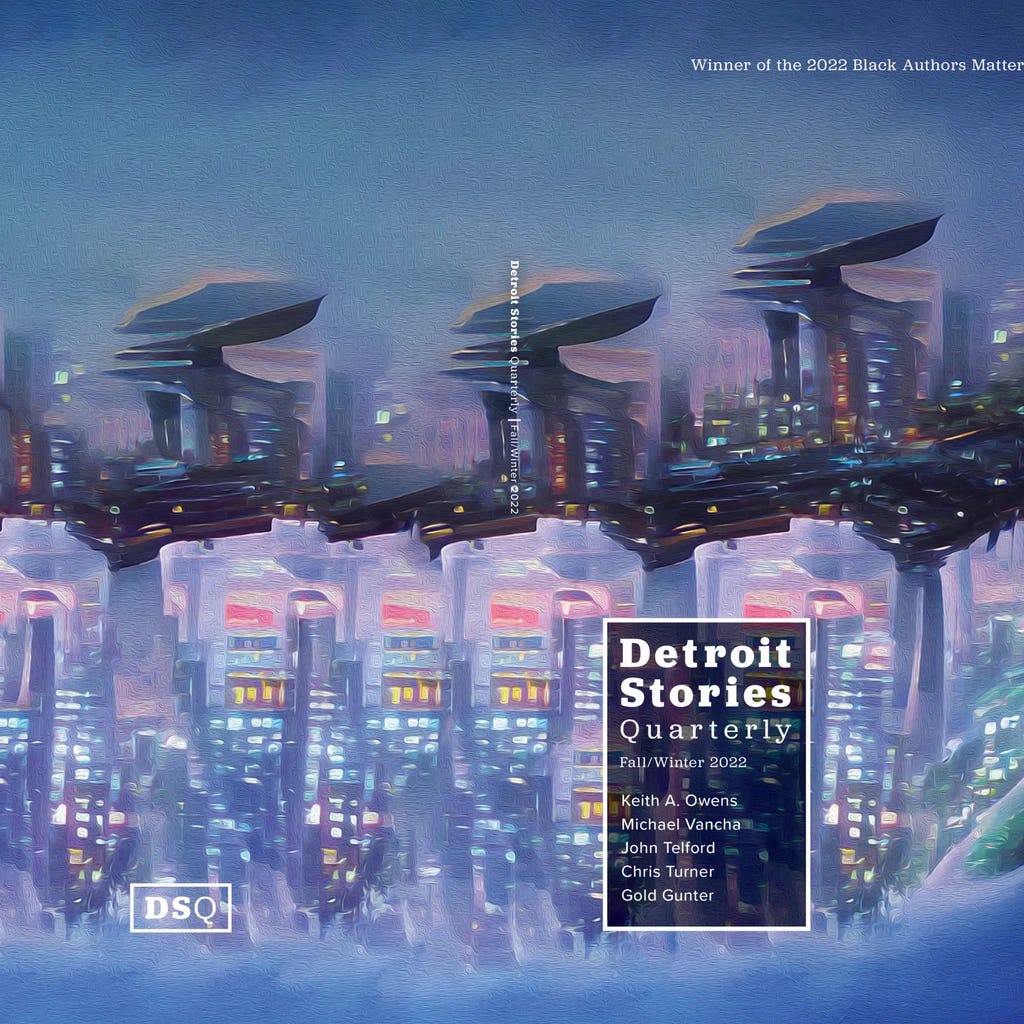Maker Learning: What is it?
Giving students a chance to learn creatively and hands-on
Photo Credit: makered.org
Issue #247 Education February 8, 2023
Those of you who know me or know about me know that my first career was as an educator of all grades from PreK through the university level, and I am a teacher first and foremost. Every year that I taught, I integrated creative activities and multi-disciplinary lessons into my classroom.
Not all children learn in exactly the same way, and professionally trained and experienced educators who are allowed to design their curricula in creative ways to meet the needs of all of their students see the positive effects. "Maker Learning" is one excellent example of creative education.
When I taught 6th-grade American geography decades ago, for each geographical region, my students learned to cook the foods and make the crafts relevant to each region. My youngest daughter was just a baby at the time, so we made candles using all of those empty baby food jars I had. Let’s recycle!
It was so much fun for me and for them.
I also taught my students to knit and crochet. Some of them didn't finish their projects, and some of the fathers told me that their sons weren't going to do that "girly" stuff.
But one of my students, the overweight shy boy that many of his classmates ignored anyway, just kept on crocheting.
One day, his aunt brought her newborn to class wrapped in the pink, blue, and white baby blanket my student crocheted for her. The class burst into applause and my dear student won the day! They didn't ignore him after that!
The article continues below.
No intrusive ads or annoying popups ever! Instead, please see the important information below and at the bottom of this post. That’s how we grow and sustain this publication. AND, please keep those “Likes” and comments coming! Thanks!
Please scroll all the down to see our “Shameless Plug” information about our books and businesses!
There is new lower pricing for the paid levels at as little as $5.00/month or $50/year!
Paid subscribers with the Substack app are invited to participate in the W.A.S. Chat Room to discuss today’s post.
All posts are free for seven days after their publication. To read all older posts, including the complete archive, and to support us financially, please consider upgrading your subscription to a paid level. Save 17% with an annual subscription.
Don’t forget to check out our “Shameless Plug” at the bottom of this article.
Thank you for your support!
The article continues…
Maker Learning is a type of learning that focuses on hands-on experience and exploration. It originated in the maker movement, which emphasizes using technology to create products from raw materials or recycled materials.
Maker education isn’t about the stuff we can make, it’s about the connections, community, and meaning we can make, and who holds the power to decide what our futures hold.
Maker education offers a transformational approach to teaching and learning that attends to the real and relevant needs of learners and humans. It is an approach that positions agency and student interest at the center, asking students to become more aware of the design of the world around them and begin to see themselves as people who can tinker, hack and improve that design.
Maker Learning is typically taught through workshops and other activities, such as building robots, programming computer code, soldering circuits, working with 3D printers, and laser cutters, and constructing electronic devices.
The goal of Maker Learning is to provide students with skills that allow them to make something useful for their own needs or for the needs of others.
By engaging in these types of activities, students gain valuable problem-solving skills while developing an appreciation for engineering and design principles — all within a supportive environment that allows them to take risks and make mistakes without fear of being judged. Maker Learning is quickly becoming a popular way to teach STEM (Science, Technology, Engineering, and Mathematics) skills in the classroom or at home.
Of course, as a strong believer in "STEAM" skills, the "A" in STEAM, I added art, music, and creative writing to my lessons.
Maker Learning has proven to be an effective way of engaging students while providing them with the tools they need to succeed in today's ever-evolving digital world. It's a great way to encourage creativity and lifelong learning while giving students the confidence to explore their interests.
Maker Learning allows for the development of critical thinking skills that can be applied to a variety of situations. Through hands-on experimentation and exploration, students can foster an understanding of how engineering principles apply to everyday life, as well as develop creative solutions to complex problems.
By making learning hands-on, students are able to relate concepts to real life, allowing them to more easily comprehend the material.
Ultimately, Maker Learning encourages students to explore their own interests while developing a range of valuable skills that will help them succeed in any field they may choose to pursue.
Overall, Maker Learning offers an exciting way for students of all ages and abilities to learn about STEM ( and STEAM!) topics and develop important skills that can be used in various aspects of their lives.
It is the antithesis of rote learning, teaching to the test, and having students spend their days filling in little circles on worksheets with little or no creative or physical outlets.
In those districts that still treat teachers like highly educated and experienced professionals instead of potential felons (I'm looking at you, DeSantis and Abbott), Maker Learning is an excellent example of teaching and learning for the 21st century.
Primary Source: https://makered.org
What are your thoughts about the state of public education in America these days? Let us know in the comments or start a dialogue in the W.A.S. Chat Forum (for paid subscribers only).
Help us to grow our We Are Speaking Substack!
Don’t Forget! If you have the W.A.S. app for iOS and Android, you can listen to each article by clicking the little headset icon. You can also participate in the W.A.S. Chat (for paid subscribers only).
There are many benefits to using the W.A.S. app, including the ability to listen to our posts and podcast episodes straight from the iOS or Android app.
Have you thought about starting a Substack publication of your own? It’s quick, easy, and free!
You can always leave any questions in the comments or email us.
Free posts are available for 7 days after publication. Adjust or upgrade your subscription to the paid level here. Pay less than 14¢ per post for the 36 monthly articles and podcast episodes. Thank you for your financial support!
Read the award-winning Detroit Stories Quarterly SciFi Anthology by Keith Owens, et al., with special guest authors.
Our new eBook for independent authors and creative and solo professionals is published! Are you a creative professional or independent author looking to market and brand yourself successfully? Then this is the book for you! Learn practical and targeted marketing and branding strategies that will help you stand out from the competition. Click here to get your copy!
Check out the Global Creative Community Branding and Marketing Academy (GCC BMA) offering online courses networking opportunities, and one-on-one and group coaching for independent writers and creative and solo professionals.









